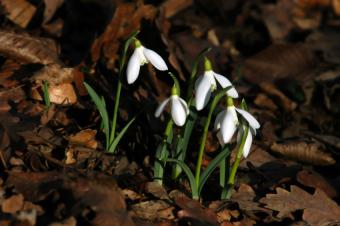Snowdrops Blooming in Snow

Cassia

Snowdrops

Camellia

Weeping Winter Jasmine

Witch Hazel

Hellebores

Lily of the Valley Shrub

Flowering Quince

What Plants Grow in Winter

© 2025 LoveToKnow Media. All rights reserved.
Discover the vibrant plants that bring color to your winter garden

Have you wondered what plants grow in winter? While many plants are dormant during the winter months, there are plants that can survive and even thrive in the cold. These plants provide color and beauty against a stark and sometimes dreary winter landscape. Planting a variety of these winter blooming plants will add interest to your garden until warm weather plants start blooming in the spring. Whether you prefer bulbs, bushes or trees in your garden, there are plants that will grow and provide pleasing blooms, even in the winter.

Senna bicapsularis, is hardy in zones 8 through 11 and in areas where the temperature does not dip below 10 degrees Fahrenheit. Cassia may bloom as late as November and then bloom again in the spring.

Galanthus nivalis, commonly referred to as snowdrops, grow well in zones 3 through 7. They are one of the earliest blooming flowers in the spring, often peeking up through the snow as early as February. They do best in well-drained soils and are well adapted to rock gardens.

Camellia is hardy to zone 6. Plant in a partially shaded area where flowers can thaw out after a snow or frost without direct sunlight. Camellia flowers will survive temperatures as low as 15 degrees Fahrenheit. Depending upon the cultivar, flowers will appear from October through March.

Jasminum nudiflorum is hardy in zones 6 through 10. It will bloom beginning in November and will produce heavy blooms January through March. It may be trained along a trellis, fence line or used to fill in banks and hillsides.

Hamamelis x intermedia, commonly called witch hazel, grows well in zones 4 through 8. It does best in well-drained, acidic soil. The plants may be mulched with pine bark, which will protect young plants during the summer months.

Hellebores grow well in zones 4 through 8. The flowers are available in a wide range of colors, from white to crimson. Hellebores plants prefer rich, moist, well-drained soils. Plant them around other shrubs in the garden to add interest and to keep the deer away.

Pieris japonica, commonly known as lily of the valley shrub, thrives in zones 4 through 8. They do well in cool, dry areas and make good garden partners with rhododendrons and azaleas.

Chaenomeles speciosa, also known as flowering quince, may be planted in zones 4 through 9, depending upon the cultivar selected. The plant enjoys full sun in well-drained, non-alkaline soil. The plant will begin blooming in warmer climates as early as January. The fruit from the tree may be harvested in October and made into jelly.

Reticulated Iris, or Iris reticulata, may be planted in zones 4 through 9. Plant in full sun to partial shade in groupings or around shrubs, depending upon landscaping needs. The plants will begin blooming as early as January and continue through mid-March.
Learn more about early blooming flowers in the seasonal spring flowers slideshow.